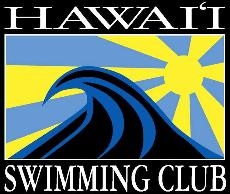
Safe Sport
USA Swimming and U.S. Center for Safe Sport contact & reporting information:
- USA Swimming (719) 866-4578 Deal with a Safe Sport Concern.
- U.S. Center for Safe Sport to make a report.
- Use the online reporting form, call (720) 524-5640
- Find more information at www.uscenterforsafesport.org.
Add Safe Sport Club Coordinator contact information.
Meet Marshall:
- HSC Safe Sport Mission Statement:
-
USA Swimming's and Hawaii Swim Club's top priority is the safety and well-being of its members. They strive to better educate and prevent abuse within the sport and to provide the best possible experience for its members, in the safest possible environment.
HSC follows the USA Swimming Safe Sport Best Practice Guidelines
1. Parents should be encouraged to appropriately support their children’s
swimming experience.
2. All swimming practices should be open to observation by parents.
3. Coaches should not initiate contact with or accept supervisory responsibility
for athletes outside club programs and activities.
4. When only one athlete and one coach travel to a competition, at the
competition the coach and athlete should attempt to establish a “buddy” club
to associate with during the competition and when away from the venue.
5. Relationships of a peer-to-peer nature with any athletes should be avoided.
For example, coaches should avoid sharing their own personal problems
with athletes.
6. Coaches and other non-athlete adult members should avoid horseplay
and roughhousing with athletes.
7. When a coach touches an athlete as part of instruction, the coach should do
so in direct view of others and inform the athlete of what he/she is doing prior
to the initial contact. Touching athletes should be minimized outside the
boundaries of what is considered normal instruction. Appropriate interaction
would include high fives, fist bumps, side-to-side hugs and handshakes.
8. Coaches should avoid having athletes as their favorites. They should also
avoid creating a situation that could be perceived as them having favorites.
9. Gift-giving, providing special favors or showing favoritism to individual athletes
is strongly discouraged.
-
- HSC Safe Sport: Policies
- Minor Athlete Abuse Prevention Policy
- Acknowledgement of MAAPP Policy
- Action Plan to Address Bullying Policy
- Permission for Team Travel Policy
- Locker Room Policy
- Photography policy
- Photography Consent Form
- Minor Athlete Abuse Prevention Policy
- HSC Safe Sport: Code of Conduct
- Code of Conduct / Honor Code
- Athlete Code of Conduct
- Coach Code of Conduct
- Parent Code of Conduct
- HSC Safe Sport: Procedures, Guides & Information
- Grievance Procedure
- Peer-to-Peer Resource Guide
- Safety Plan Worksheet
- Language for Meet Information
- HSC Safe Sport: Written Permission
- Licensed Massage Therapist / Other Certified Professional / Health Care Provide to Treat a Minor Athlete
-
- Unrelated Adult Athlete to Share the Same Hotel, Sleeping Arrangement or Overnight Lodging Location with Minor Athlete
-
- Unrelated Applicable Adult to Provide Local Transportation to Minor Athlete
-
- Unrelated Applicable Adult to Travel to Competition Alone with Minor Athlete
- Athlete Protection Training
- Safe Sport Training for Minor Athletes
- Mandatory for USA Swimming Registered swimmers 12 - 17 years of age.
- Safe Sport Training for Minor Athletes
-
- Safe Sport Training for Adult Athletes
- Mandatory for USA Swimming Registered swimmers 18 years old and up.
- Safe Sport Training for Adult Athletes
-
- Safe Sport for Parents
- Mandatory for parents who interact one-on-one with swimmers. For example, parent chaperones on team/club organized swim trips.
- Safe Sport for Parents
-
- Bully Prevention
- Optional to all.
- HSC Anti-Bullying Policy
- Bully Prevention
- USA Swimming Minor Athlete Abuse Protection Policy (MAAPP)
- All HSC Coaches, Staff, Parents, Swimmers, and Families must read.
- Social Media and Electronic Communication & FAQs
- USA Swimming MAAPP Website
- Deal with Safe Sport Concern



